Again in December of 2022, I began a sequence taking you on a excursion of the Perses mission. Those articles coated this somewhat new open dashboard and visualization mission concentrated on cloud-native environments. I used a getting began workshop to steer you thru this sequence and to offer a hands-on revel in for the ones new to visualizing observability information.
In the former article, you expanded the visualization of information, leading to a extra complex dashboard. I equipped hyperlinks to the true on-line workshop content material.
On this article, you’ll be able to finalize this complex dashboard to your on-call teammates and finally end up with what we seek advice from as a complicated++ dashboard.
Let’s end our dashboard development, lets?
On this lab, you’ll proceed hands-on with this mission, finalizing your dashboard via including a 3rd row to your panels, new documentation, and a multi-gauge device standing evaluation panel. It is deep into the extra complex designing and format tweaks you’ll be told alongside the best way.
You’ll be able to to find the unfastened workshop right here on-line:
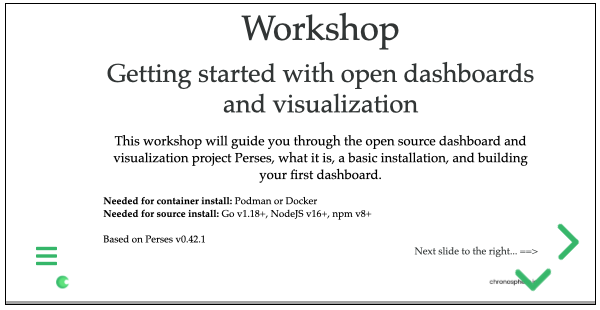
Now let’s get after it and finalize our Perses dashboard. Notice: this text is just a brief abstract, so please see your entire lab discovered on-line as lab 7 right here to paintings thru growing this complex++ dashboard your self:

The next is a brief evaluation of what’s on this particular lab of the Perses workshop.
An Complex++ Dashboard
This lab displays you how one can construct and lengthen your complex dashboard, polishing it up with a couple of extra vital parts till you’ve a complicated++ dashboard you’ll be able to be pleased with. It is development off of the paintings accomplished in earlier labs, however for those who aren’t in a position to finish the former labs, we provide a shortcut the use of the Perses command line tooling and API to get you began.
The very first thing you’ll be able to be doing is including a brand new row and adjusting the row format. As soon as that is accomplished, you will have to be having a look at a dashboard like this:
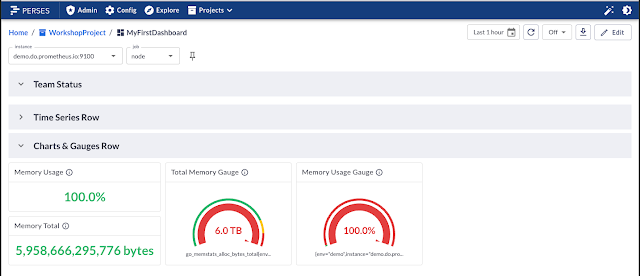
Subsequent up, to make this dashboard efficient to your on-call teammates after they land right here to triage an incident, you’ll be able to be including a documentation panel. This can be a panel that lets you use the Markdown language to create hyperlinks and tips to the tips that your teammates would want to lend a hand them in this dashboard.
It is simply an instance you might be growing, however it’ll glance one thing like this when accomplished, with hyperlinks and textual content formatted to lend a hand the consumer:
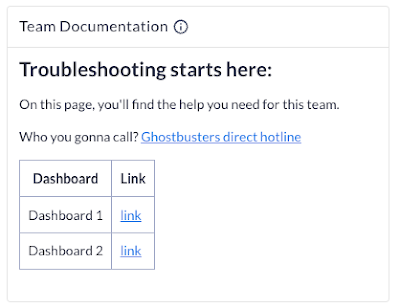
The Markdown code to create this can also be added to the equipped UI editor, making this a right away and simple design procedure:
## Troubleshooting begins right here: In this web page, you'll be able to to find the lend a hand you wish to have for this staff. Who you gonna name? [Ghostbusters direct hotline](https://chronosphere.io) | Dashboard | Hyperlink | | --------- | ---- | | Dashboard 1 | https://dzone.com/articles/open-dashboard-and-visualization-workshop-finalizi(https://chronosphere.io) | | Dashboard 2 | https://dzone.com/articles/open-dashboard-and-visualization-workshop-finalizi(https://chronosphere.io) |
This leads to the next addition on your dashboard view and offers the consumer direct get entry to to what you believe to be vital documentation:
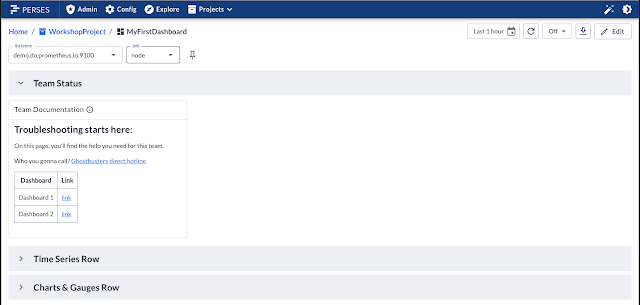
The ultimate panel you’ll be able to be including goes to be a large one: it is referred to as a multi-gauge panel. It is a little other than the only gauge panels that you just added up to now, simplest in that the PromQL question gathers information from more than one resources the use of a median serve as. The consequences feed into a typical gauge panel however are unfold over more than one gauges as wanted and appear to be this:

The general effects are spectacular if you find yourself having a look on the ultimate dashboard you’ve got created:
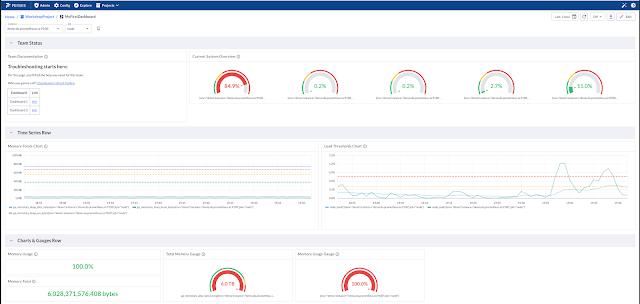
This can be a bit overwhelming for any of your on-call teammates to reach at with all of the panels visual and each row expanded absolutely. You’ll be able to repair this via finding out how one can regulate rows to be closed or open via default in order that whilst you land at the dashboard you get simply the correct amount of data for the duty to hand.
The general result of your complex++ dashboard appear to be this:

This brings you to the tip of this open dashboard and visualization workshop, that includes your finding out how one can do all of it with the Perses mission. The objective is now that you’re in a position to discover extra for your personal group and spot the place you may be able to unfastened your self from the proprietary vendor-controlled dashboard merchandise. Satisfied visualizing!